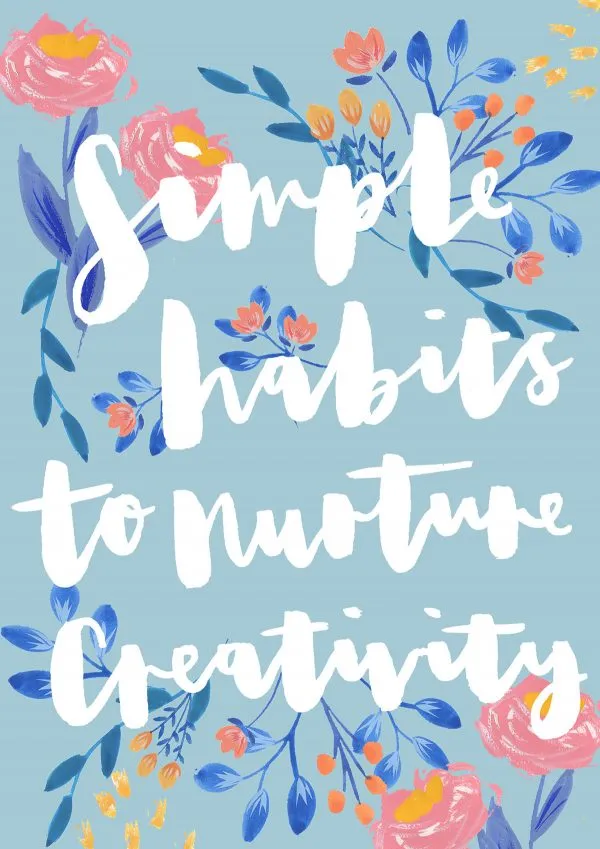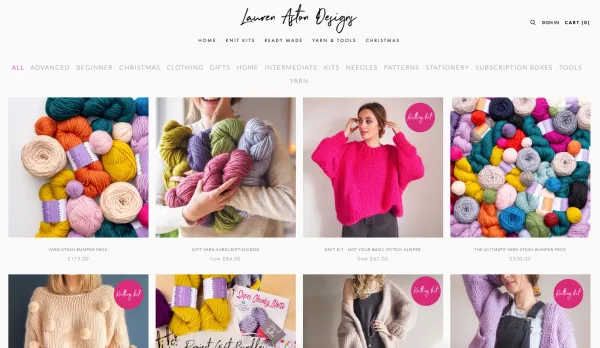Part three of the indie biz expert series is here! The lovely Aime from Studio Cotton and fab Helen from The Creative Business Network are back answering all your questions. This month's blog post is more detailed than Series One and we're focusing on how you can grow your small business. Keep scrolling to find out all their tips.
How do you know when it’s right to start subcontracting your work out to free up time for designing?

Aime: I love this question, but it’s definitely a case of each business and each person being different. Let’s say I run an illustration business and have five responsibilities:
- Designing new products
- Fulfilling orders
- Managing my website
- Creating marketing content
- Running workshops
I want to keep tasks 1 and 5 as that’s my passion. Task 2 – fulfilling orders – is super boring, cheapest to outsource and frees up the most time for designing new products, so that’s probably where I’ll start delegating. It might be that I don’t mind managing my website, but engaging with an expert in that area has the highest potential return on investment, so that might be next on the list.
Now that will not be the same for everyone. You might really love fulfilling orders (who doesn’t love wrapping!) so want to keep that task to yourself, or you might be 100% confident that you’re bossing website management, and so seeking an expert in creating marketing content would have a greater positive impact on your business.
Personally, I found it really helpful to create a list of everything I currently do within my business, and highlight the responsibilities that I love and want to keep as mine. Then I started with the biggest holes – the tasks that would have the biggest positive impact – and started looking for the best people to fill them up!
Outsource to the experts
Helen: I agree with all that Aime has said, and I do think that as a business you’ll know when you can start outsourcing. Sometimes it doesn’t feel completely obvious, and there's bound to be a transition time where you’ll be worrying about spending too much for the equivalent you’ll bring in, but this will balance out.
Go through the jobs you struggle with. Maybe you're constantly worrying about your social media and spend hours thinking of something to post? Get rid of that worry by giving it to someone who’ll take 15 minutes to put together a Facebook post and use those hours you would have spent worrying creating a new design!
I’m a big fan of outsourcing the jobs you either don’t want to do, or don’t have the experience to do as well as someone else. By giving those jobs to people with more knowledge, those aspects of your business will be done so much better and leave you time to focus on the jobs you do well.
How should I approach stores if I want them to consider stocking my products?

Aime: When you’re approaching retailers, you’re probably contacting people who don’t yet know that they want to hear from you. It’s your job to add your brand to their psyche in a manner that's engaging, professional and succinct. Keep your first email to the point, and cover three topics:
- A specific compliment about their business (e.g. I love your new winter collection/I was at your pop up event and the cake was out of this world)
- What you do, in one sentence (e.g. I create hand-illustrated tote bags inspired by cormorants)
- Ask the retailer if they think your products would be a good fit for their business
Most importantly, be prepared for the sale. You should absolutely know your minimum order quantities, minimum order values, if you’re happy to be stocked on a sale-or-return basis as well as your wholesale and retail prices.
If you’re an absolute diamond, you might want to attach this information as a very pretty PDF to your first email. That way the retailer knows that you're lovely, attentive and thoroughly prepared. Oh, and always follow up. It’s totally ok to email after a week or two and check in.
Engage with the brand, learn their ethos
Helen: Always research the store before approaching them. You need to know who else they stock and also why you feel your products would fit well alongside those. Tell them why in your email. Find out the name and direct email of the person who deals with the trade side of the business, and use their name in your communication. They’ll want to know you’ve done your research and that they'll get as much out of this relationship as you will.
Don’t just turn up at the shop with your products (unless they encourage that on their online platforms), as they’ll be unlikely to have the time to talk to you, and also the person you need to speak to might not be around.
If it’s an independent store, follow them on their social channels, sign up to their emails and start to engage with them beforehand. This can potentially become a really valuable relationship for both of you, so it's worth taking your time beforehand to learn about them and their ethos to make sure you’re focusing your energies in the right place.
Should I send my newsletters with military regularity or only when I’ve got big shiz to say?

Aime: I’m going to be totes awkward and say somewhere in between. Ideally, you should be regular when you can be, but hey, we’re small businesses and sometimes life gets in the way of our well-intentioned content plans. On the big shiz front – there are very few small businesses who don’t have a new item of big shiz every darned week.
Creative businesses are generally truly terrible at email marketing (sorry!) and have an epic obsession with sending meandering essays to their ever-so-precious mailing lists.
This is one reason why I would LOVE to ban the term ‘newsletter’ from small biz vocabulary. An email marketing mailing list is your most engaged, ready-to-buy audience. Don’t send them ‘news’, send them something they will want to give you money for.
They can handle the salesiest of salesy messages, and don’t need to be warmed up with fuzzy hugs and long hellos. Save that loveliness for the ‘gram.
If you have a new collection, that’s big shiz. A best selling product? More big shiz. Want to do a deep-dive on your favourite make? Also big shiz. A customer shared a pic of your brand new bestseller on Instagram? That’s big shiz too.
Your marketing emails only need to contain a single super compelling message. If you’re looking for inspiration, look at how your favourite high street retailers use email marketing - my absolute favourites are Glossier, Monki and Wool and The Gang.
Inform, inspire, educate or entertain

Helen: Haha, I absolutely agree with everything that Aime has said here! I always say that your content has to inform, inspire, educate or entertain, and that’s no different when it comes to your emails. Always think about the end reader first and foremost. If you’re bored writing your email, or you’re struggling to know what to write, they’ll know. Respect their inbox and give them something worth reading.
However, remember that your subscribers have signed up because they WANT to hear from you. You are important to them, and they are already invested in you. You don’t need to persuade them to love your products. They're likely already customers, or if not keen to find out more about you.
I would really try and send out regular ones, ideally every two weeks if you can. If you’re just sending out an email with one or two messages in them, they can be written quickly and sent out just as quick. If people want to open it, they will. You’ve not lost out on anything. And as we all know, the highest return on investment is through your email newsletter (sorry Aime!) so don’t shirk on them!
I’m a very small level creator making products which could be interpreted as toys, but really struggling with CE testing laws. How can I navigate this expensive testing at micro level?

Helen: If I’m honest, I don’t know enough about this subject to advise in any way. I’ve not worked with any clients who have needed CE testing. I'd start by joining some Facebook groups/pages which focus around CE testing as you’ll be able to talk to people who have gone through the procedures. A couple I’ve found are:
- https://www.facebook.com/groups/125356137672409/
- https://www.facebook.com/groups/cemarkingsupportnetworksofttoys/
Folksy have written an in-depth blog about it which explains the procedures and also has lots of links to places you can find out more here.
And lastly, if you’re looking for legal support at all, Ingrid Fernandez works with small independent and creative businesses and is extremely approachable. She makes the legal side of things friendly instead of scary! Her website is being built currently but you can find her Facebook page here.
Do you think it’s important to have a niche, or if you're passionate about more than one medium, diversify?

Aime: As a branding and marketing expert, a defined and cohesive product range is the commercial dream. It allows us to focus our efforts on a tighter message and more targeted audience, in turn, helping to reach more of the right people.
I have two fantasy side hustles. One is creating classy outdoor plant pots from recycled plastic, and the other is a patterned carpet shop – think your nan’s bungalow but somehow but more garish and more fabulous. I would really struggle to market them as the same business because I would have to spread my resources and my messaging too thin to be effective.
I could have two concurrent brands, but that would mean two of everything. Two websites, two social media presences, two lots of bookkeeping, and one very stressed Aime.
Sometimes establishing a core range and adding collections that push a niche can work. But there will always be some products that will never complement each other. Instead, try mastering one business at a time. It’s ok to have an amazing business idea sitting on a shelf while you nail the first thing.
Keep it clear, keep it consistent

Helen: It’s important to have a clear style in what you do. However, there are always ways you can diversify your product range. There are loads of creative businesses out there that diversify in their product ranges but don’t compromise on their style. If you want to do this you’ll need to be recognised in a certain way so your customer doesn’t get confused about who you are.
It can become inevitable that you want to diversify as a creative. You can fall out of love with styles or products so you want to bring in new ideas, and that’s fine. However, remember to stay consistent to your brand and when you look at everything your business offers, make sure it makes sense.
Lauren Aston Designs transformed her business when she brought in affordable Knit Kits alongside her high-end ready-made products. They are two different audiences but they work together under the same brand.
Rosie Johnson Illustrates has developed a range of Christmas decorations alongside cards, prints, bags and T-shirts and more. So many different products, but all based on her illustrations and all with a 100% recycled and sustainable ethos.
Martha & Hepsie produce everything from wrapping paper and cushions to calendars and children’s clothing, and now offer upholstery too. All with their striking designs but very different product ranges.